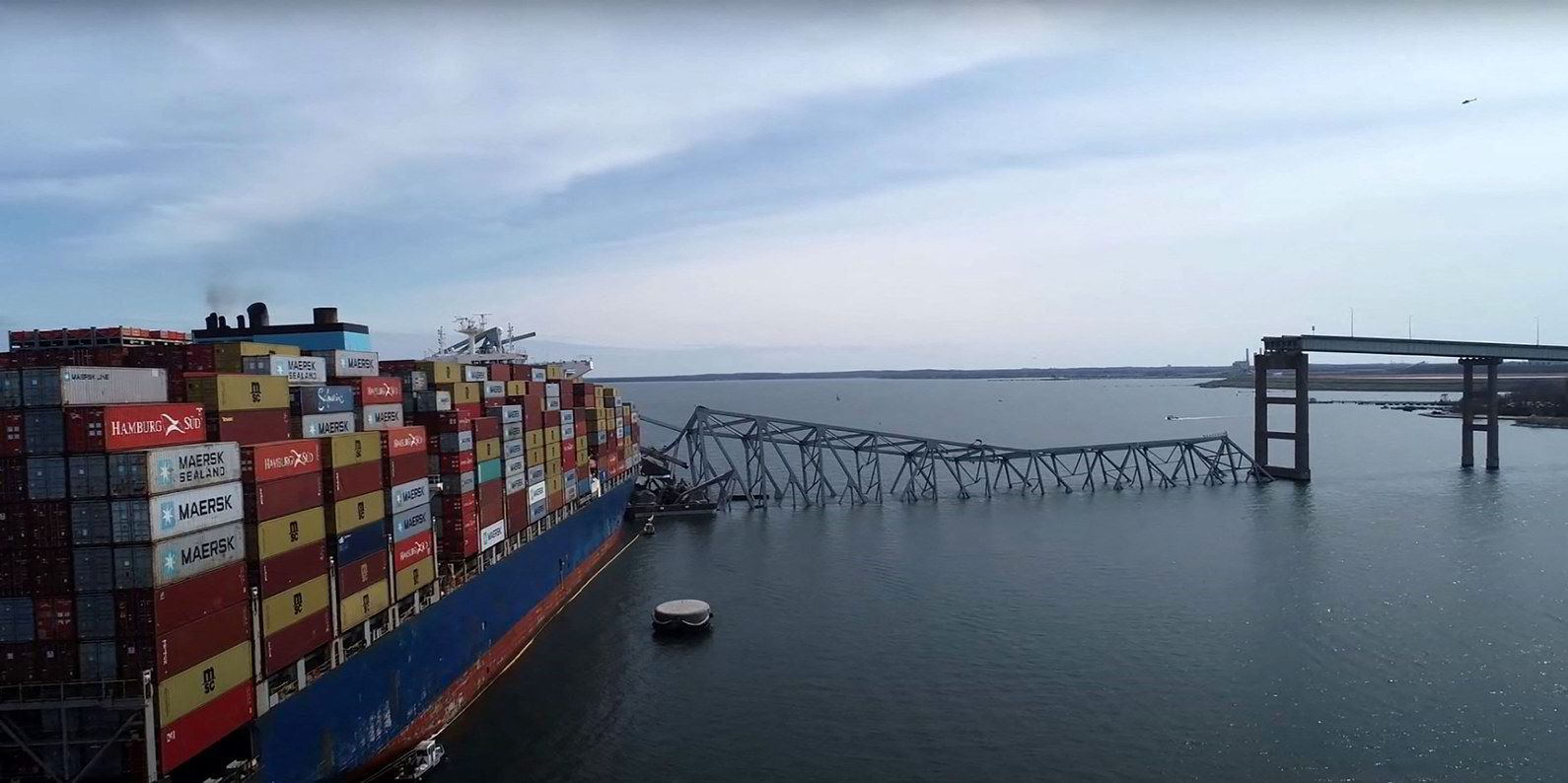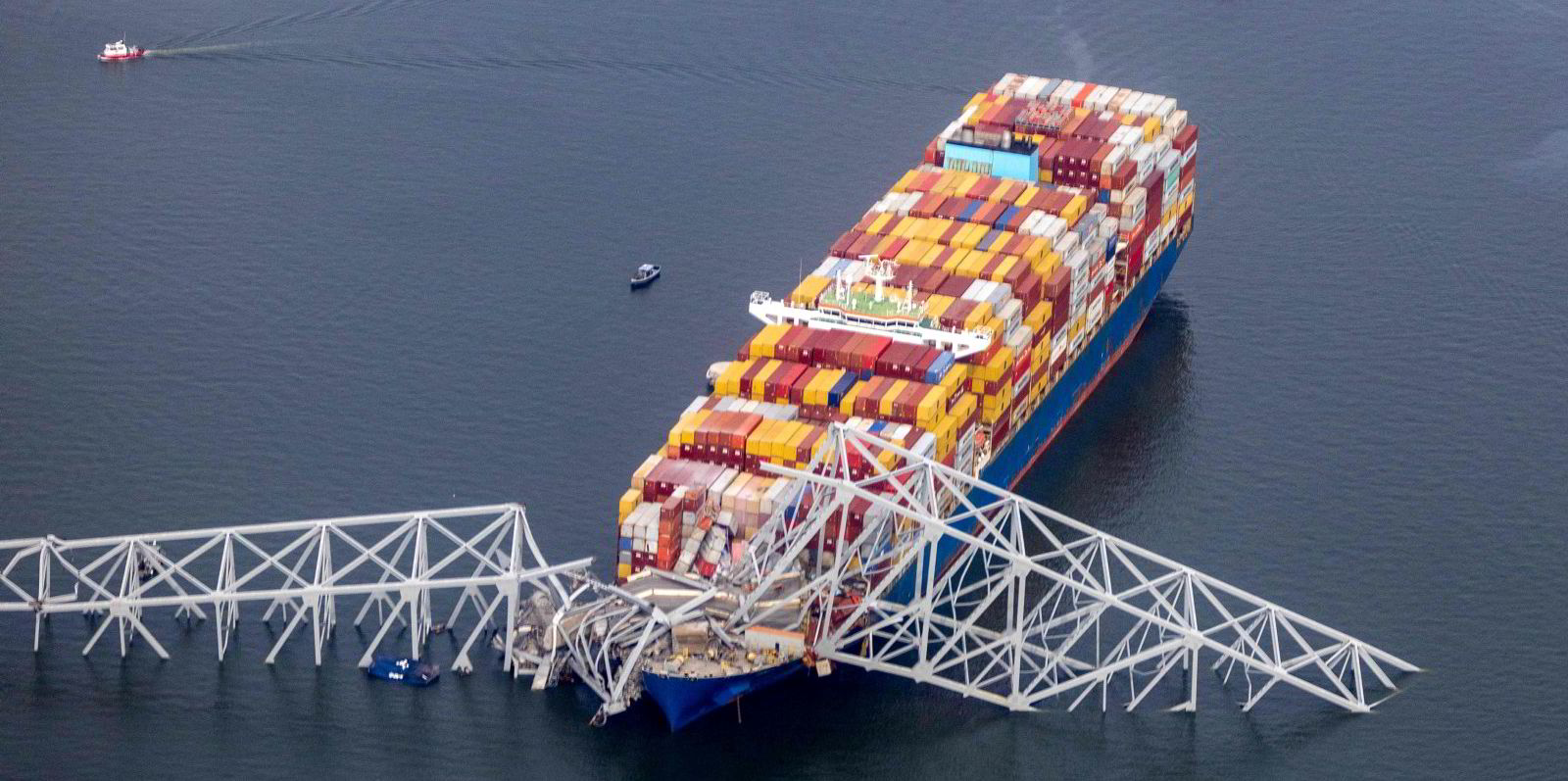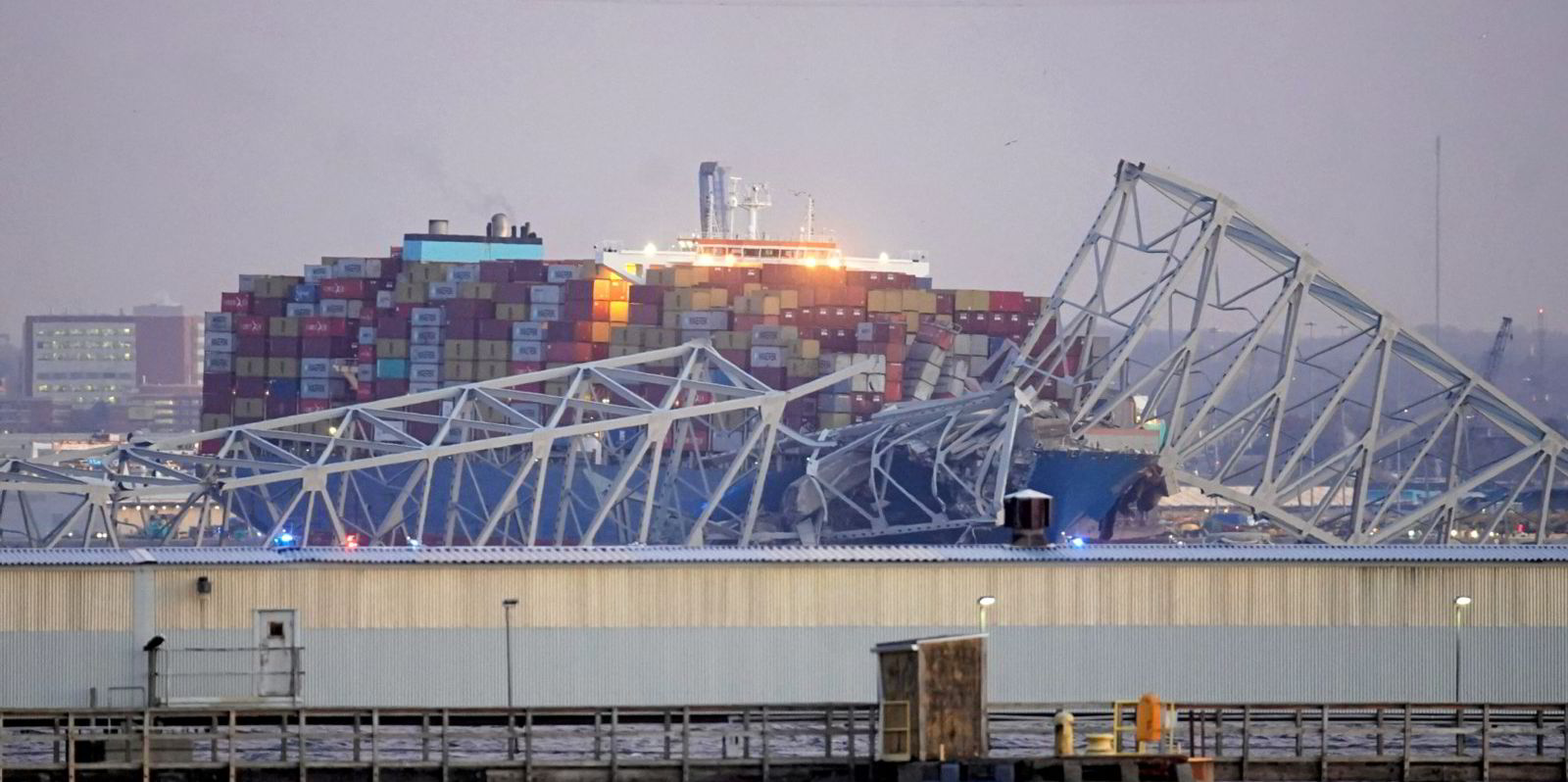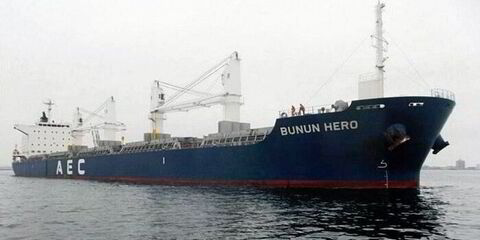The Baltimore bridge disaster has taken its place on a tragic list of fatal collapses caused by ships.
But such incidents remain relatively uncommon.
Six people are feared dead after the Maersk-chartered container ship Dali hit the Francis Scott Key Bridge on Tuesday.
There have been 203 contact-with-infrastructure incidents involving container ships around the world in the past 10 years.
“Bridge incidents such as this one are rare,” said Captain Rahul Khanna, global head of marine risk consulting at Allianz Commercial.
Machinery damage or failure is the most common cause.
An academic paper by researchers Michael Knott and Mikele Winters shows that from 1960 to 2015, there were 35 major bridge collapses worldwide due to ship or barge collision, with a total loss of 342 lives.
Eighteen of these were in the US.
Two infamous collisions occurred in 1980: the destruction of the Sunshine Skyway Bridge in the US and the Almo Bridge in Sweden.
Florida’s Skyway was brought down by an empty 35,000-dwt bulker, killing 35 people.
Eight people lost their lives in Sweden when the bulker Star Clipper hit the bridge.
Russian tragedy
The greatest loss of life occurred in 1983 when a passenger ship hit a railroad bridge on the Volga River in Russia, killing 176 people.
Most of the deaths occurred when a cinema on the top deck of the ferry sheared off.
More recent tragedies include the collapse of the Jiujiang Bridge in China in 2007, with nine fatalities, and the Eggner’s Ferry Bridge collapse in Kentucky in the US.
“It should be noted that there are numerous vessel collision accidents with bridges which cause damage that varies from minor to significant but does not necessarily result in collapse of the structure or loss of life,” Khanna said.
According to the American Road & Transportation Builders Association, more than one-third, or 220,000, of the nation’s 618,000 bridges needed structural repair, rehabilitation work or replacement in 2021.
Allianz said that while the number of serious shipping accidents worldwide has declined in the long term, incidents involving large vessels, namely container ships and car carriers, are resulting in disproportionately high losses.
Recent casualties include fires on board the car carriers Fremantle Highway and Felicity Ace, and the container ship X-Press Pearl.
In 2022, the large boxship Ever Forward ran aground in Chesapeake Bay in the US and was stuck for more than a month, almost a year to the day after its sister vessel the Ever Given ran aground and blocked the Suez Canal for six days in March 2021.
Risks increasing
“As vessels have grown larger, values at risk have increased, while the environmental bar has been raised. However, regulation, safety management systems and salvage capabilities appear to have not always kept pace,” Khanna said.
Allianz points out that a number of incidents involving large losses in recent years have also ended in costly salvage and wreck removal operations, such as that of the car carrier Golden Ray, which capsized just outside the US port of Brunswick, Georgia in 2019.
This work took almost two years and cost in excess of $800m.
“The rising cost of salvage and wreck removal for large vessels is a particularly worrying trend for the insurance industry,” said Khanna.
“The complexity is compounded by environmental concerns, which continue to drive up the average cost of such incidents. Wreck removal for a large vessel can now easily run into the hundreds of millions of dollars, and in some cases upwards of $500m.”






